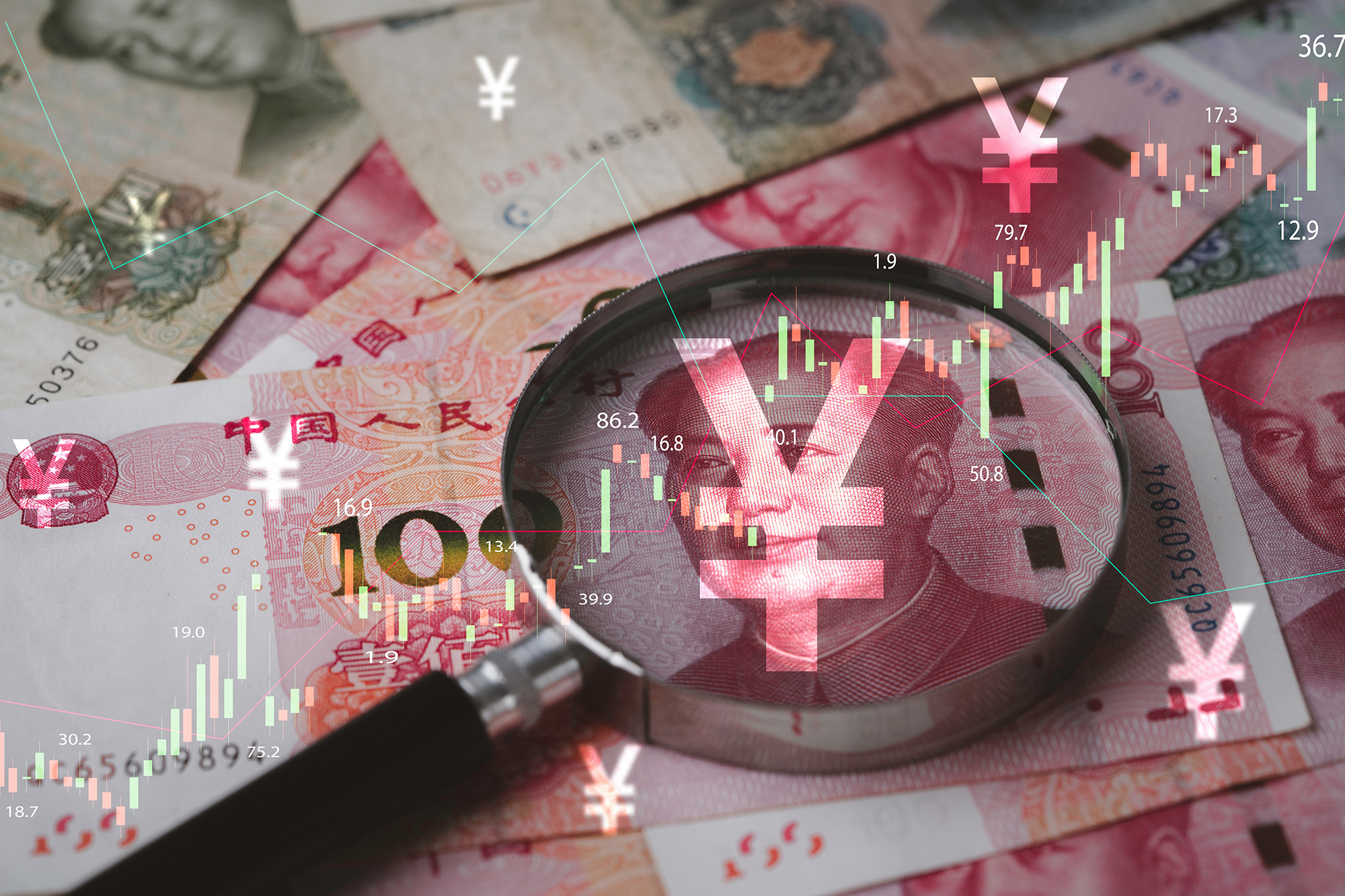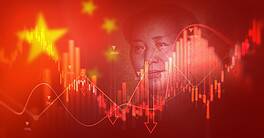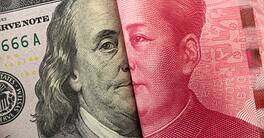Regulators seek to arrest economic slowdown.
With China’s struggling economy, the country’s banking sector is facing significant growth headwinds, as policymakers attempt to halt the deteriorating economy with a recent wave of monetary and fiscal measures. The economy has been mired in a slump, due in part to the ongoing real estate crisis that involves large inventories of unsold housing units and unfinished properties. The slowdown in property sales has made it difficult for real estate developers to deliver completed houses on schedule, so new home sales declined 25%, year-over-year (YoY), in the first eight months of 2024. Consequently, the economy is battling strong deflationary pressure due to weak consumer confidence and demand, and to this prolonged downturn in a sector that generates 24% of the nation’s GDP. Structural issues of high youth unemployment and low wage growth only exacerbate the problem.
More broadly, expanding trade wars are undercutting momentum for a recovery. Trade tension with the United States recently ramped up with new tariffs on an additional $18 billion in Chinese products, including electric vehicles (EVs) and solar panels. However, $13 billion of that applies to EV lithium-ion batteries, which is significant since importation of Chinese products has grown—now representing over 70% of EV battery imports.
Trade issues continue to spread in other regions. Following an investigation by the European Commission concluding that the EV industry in China is aided by “unfair subsidies,” the European Union announced additional tariffs of 17%-38% on these vehicles over the existing tariff of 10%. In Latin America, Mexico aims to replace Chinese supply chains by moving production from China to Mexico. This will add fuel to a significant trend, as Mexico has now replaced China as the largest trading partner with the US for the first time in more than 20 years. Imports from Mexico rose nearly 5% from 2022 to 2023, to more than $475 billion; while overall Chinese exports to the US fell 20% in 2023 to $427 billion, according to the US Department of Commerce.
These enormous challenges are difficult to overcome, and the Chinese economy continues to deteriorate. Its GDP is forecast by the International Monetary Fund to decline to 5% in 2024 from 5.3% in 2023, falling to 4.5% in 2025. To help bolster the weakening economy and ailing real estate sector, China’s Ministry of Finance was reported in September to be planning its latest round of policy measures to include a stimulus package with the issuance of 2 trillion renminbi ($282 billion) in special sovereign bonds. Half are earmarked for local government debt problems, and half to subsidize the purchase of consumer goods and to provide a monthly allowance for families with two or more children.
The plan also allows local governments to issue bonds for the purchase of land and unsold housing inventories from developers to remove some of the oversupply in the real estate sector. However, many local governments have high debt levels and are limited in taking on additional debt. These measures attempt to build on earlier initiatives. At the beginning of 2024, regulators identified over 5,700 projects that needed support and added over $200 billion in financing to allow 4 million homes to be completed. Nevertheless, millions more remain presold but not completed. Monetary policy measures by the People’s Bank of China (PBoC) involve plans to ease the bank reserve-requirement ratio by 50 basis points (bps). Another cut of 25-50 bps may occur before the end of the year in a move that will free up bank funds for loan expansion.
Additionally, with low demand for credit by the country’s borrowers, authorities reduced the loan prime rate, the benchmark lending rate, including specific relief on mortgages. The down payment was reduced to 15% from 25% for second-time homebuyers. As consumer confidence and personal consumption continue to slide, a more powerful policy tool involves reducing the interest on existing mortgages. This could cut the mortgage payment burden by $21 billion annually and provide a much-needed boost in consumer demand.
As China’s banking sector navigates this difficult operating environment, bank managers continue to reduce their exposure to the real estate sector. According to S&P Global, the share of real estate loans out of total loans fell to 26% in 2023 from 32% in 2020, while exposure at five of the largest banks fell to 29% of loans in 2023 from 37% in 2020. Additionally, the sector is targeting the infrastructure, manufacturing, and technology sectors that are experiencing double-digit growth in 2024. Additional policy measures to support the banking sector include the possible injection of ¥1 trillion into state-owned banks to boost their capacity to support the economy. To support bank profitability, the PBoC lowered deposit rates to increase bank lending margins.
Recognizing consistent ratings stability, our rankings include only one change YoY. In the case of a tied score, our methodology uses asset size as a tiebreaker, and Shenzhen Rural Commercial Bank replaces the Bank of Chongqing in 25th place.
Methodology: Behind the Rankings
The scoring methodology for the Safest Chinese Banks follows that used in our other Safest Banks rankings. A rating of AAA is assigned a score of 10 points, AA+ receives nine points, down to BBB- worth one point, BB+ worth -1 point, and so on. When a bank has only two ratings, an implied score for the third rating is calculated by taking the average of the other two and deducting one point. When a bank has only one rating, an implied score for the second rating is calculated by deducting one point from the actual rating, and an implied score for the third rating is calculated by deducting two points from the actual rating.
| Rank | Bank | Ratings / Score | Total Assets | Report | ||
| Fitch | Moody’s | S&P | (USD million) | Date | ||
| 1 | China Development Bank | A+ | A1 | A+ | 2,611,361 | 12/31/23 |
| 2 | Agricultural Development Bank of China | A+ | A1 | A+ | 1,394,821 | 12/31/23 |
| 3 | Export-Import Bank of China | A+ | A1 | A+ | 893,938 | 12/31/23 |
| 4 | Industrial & Commercial Bank of China | A | A1 | A | 6,256,940 | 12/31/23 |
| 5 | Agricultural Bank of China | A | A1 | A | 5,622,090 | 12/31/23 |
| 6 | China Construction Bank | A | A1 | A | 5,364,918 | 12/31/23 |
| 7 | Bank of China | A | A1 | A | 4,540,031 | 12/31/23 |
| 8 | Hang Seng Bank (China) | NR | NR | A+ | 90,051 | 12/31/21 |
| 9 | Bank of Communications | A | A2 | A- | 1,968,261 | 12/31/23 |
| 10 | China Merchants Bank | A- | A2 | A- | 1,543,827 | 12/31/23 |
| 11 | China CITIC Bank | BBB+ | Baa2 | A- | 1,267,216 | 12/31/23 |
| 12 | China Everbright Bank | BBB+ | Baa2 | BBB+ | 948,093 | 12/31/23 |
| 13 | Shanghai Pudong Development Bank | BBB | Baa2 | BBB | 1,260,883 | 12/31/23 |
| 14 | Industrial Bank | BBB | Baa2 | NR | 1,422,018 | 12/31/23 |
| 15 | Ping An Bank | BB+ | Baa2 | BBB+ | 787,783 | 12/31/23 |
| 16 | Bank of Jiangsu | NR | Baa2 | NR | 479,724 | 12/31/23 |
| 17 | Bank of Shanghai | NR | Baa2 | NR | 434,922 | 12/31/23 |
| 18 | Bank of Ningbo | NR | Baa2 | NR | 382,225 | 12/31/23 |
| 19 | Chongqing Rural Commercial Bank | NR | Baa2 | NR | 203,188 | 12/31/23 |
| 20 | Shanghai Rural Commercial Bank | NR | NR | BBB | 195,929 | 12/31/23 |
| 21 | China Zheshang Bank | NR | Baa3 | BBB- | 443,149 | 12/31/23 |
| 22 | China Bohai Bank | NR | Baa3 | BBB- | 244,239 | 12/31/23 |
| 23 | China Guangfa Bank | BB+ | Baa3 | BBB- | 494,688 | 12/31/23 |
| 24 | Bank of Nanjing | NR | Baa3 | NR | 322,898 | 12/31/23 |
| 25 | Shenzhen Rural Commercial Bank | NR | Baa3 | NR | 96,564 | 12/31/22 |




